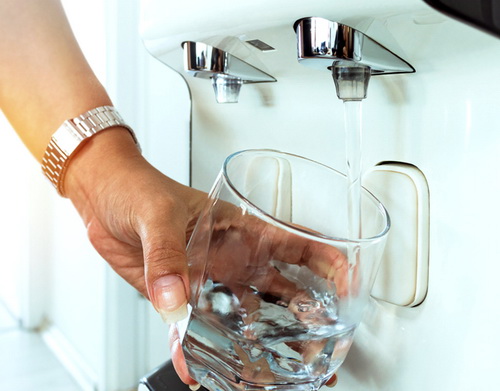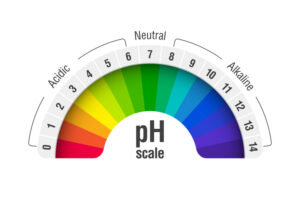
pH What?
Before we delve into the health of water, let’s define a few terms related to this subject.
-
- Acidity: Acidity means that an element (in the periodic table) can donate protons or accept electrons. Not all elements can do this, but for those that can donate protons, it happens during chemical reactions. One example is sulfuric acid, which can cause two protons to be donated. So, the underlying idea is to understand that any substances called ‘acids’ have the ability to donate protons in chemical reactions.
- Acidity: Acidity means that an element (in the periodic table) can donate protons or accept electrons. Not all elements can do this, but for those that can donate protons, it happens during chemical reactions. One example is sulfuric acid, which can cause two protons to be donated. So, the underlying idea is to understand that any substances called ‘acids’ have the ability to donate protons in chemical reactions.
-
- Alkalinity: This process counters the hydrogen ions that enter a water body or solution. This action helps maintain the pH relatively stable, preventing it from becoming too acidic, which is not good for the environment, specifically drinking water.
- Alkalinity: This process counters the hydrogen ions that enter a water body or solution. This action helps maintain the pH relatively stable, preventing it from becoming too acidic, which is not good for the environment, specifically drinking water.
-
- pH: pH, which stands for “potential of hydrogen,” is a scale that measures the acidity or alkalinity of a substance. Its numeric representation ranges from 0 to 14. Specifically, it indicates the concentration of hydrogen ions in a solution. A pH of 7 is considered neutral, while values below 7 are acidic and above 7 are alkaline.
Water’s pH is crucial in determining its quality and potential health effects. Healthy water typically falls within a specific pH range suitable for human consumption. Let’s delve deeper into how pH relates to healthy water and why maintaining optimal pH levels is essential.
pH and Drinking Water
Yes, water can taste good, and it’s related to pH. Let’s take a look.
The pH of drinking water can vary depending on various factors, such as the original source of the water and the process by which the water is treated. Drinking water with a pH between 6.5 and 8.5 is considered healthy, but water below 6.5 may taste acidic (remember, acidity means atoms that can donate protons). Water with a pH above 8.5 may taste bitter but contain dissolved minerals like calcium and magnesium.
Acidic vs. Alkaline Water

As mentioned, water with a pH below 6.5 is considered acidic. Water with pH levels on or below 6 is considered lightly acidic and generally safe to drink. However, highly acidic water (below pH 5) can not only be harmful to our health but can cause such things as plumbing fixtures to begin to corrode. And if that’s the case, just think what it can do to your teeth!
Water with a pH above 7 is known as alkaline and in contrast to acidic water, alkaline water is known to have some health benefits. One study done in 2020 with mice showed it helped improve the aging process.
Maybe that’s because our bodies tend to be more alkaline naturally by a slight margin, with pH levels ranging from 7.35 to 7.45. In so doing, water within these levels can help support the body’s natural pH balance and maintain ideal hydration, so it is recommended to stay within this range when drinking water; however, many scientists believe that, in general, drinking alkaline water with a pH level of around 8 may be more beneficial in terms of hydration and bone health. It may also assist in the antioxidant process. But more scientific research is needed.
But let’s not overdo it. Drinking alkaline water excessively may alter the body’s pH balance too much, leading to negative health issues, such as disturbing the digestive system and causing acid reflux, and can possibly cause alkalosis, which can result in various health issues.
Drinking water with a pH that deviates significantly from the body’s natural pH on either side will most likely disrupt our internal processes and can potentially lead to more severe health issues. For instance, highly acidic water may irritate the digestive system and contribute to conditions like acid reflux, while highly alkaline water can also cause digestive issues and skin irritation.
Water Treatment and pH Adjustment
When living in the Bronx, this author’s father once said, “NYC water is the best water you can drink,” and he’s right. Just think of the consequences if 8.5 million people drink water that is not treated correctly!
Water treatment facilities adjust the pH of drinking water to ensure it meets regulatory standards and is safe for consumption. Common methods for pH adjustment include adding alkaline substances like lime or sodium hydroxide to raise pH or using acids like carbon dioxide or sulfuric acid to lower pH. The water is also tested frequently.
Testing and Monitoring pH

Water treatment plants regularly test and monitor pH to ensure quality and safety. Home testing kits or DIY tests are available if you’d like to test your water’s pH.
Conclusion
The ideal pH range for drinking water is between 6.5 and 8.5.
pH is a critical factor in determining the quality and suitability of water for drinking. Healthy water typically falls within a pH range of 6.5 to 8.5, which is compatible with the body’s natural pH balance and supports optimal hydration.
In general, water with a pH level below 6.5 is considered acidic, and Water with a pH level above 7 is alkaline. To easily remember which side of the pH scale is acidic and which is alkaline, use the phrase “Highline Alkaline.” This mnemonic links to the famous High Line park in NYC, helping you recall that alkaline substances are on the higher end of the pH scale, while acidic substances are on the lower end.
Proper pH levels in water ensure its safety and taste. Regular testing and pH monitoring help identify deviations from the optimal range and facilitate appropriate corrective measures to maintain water quality and health.
